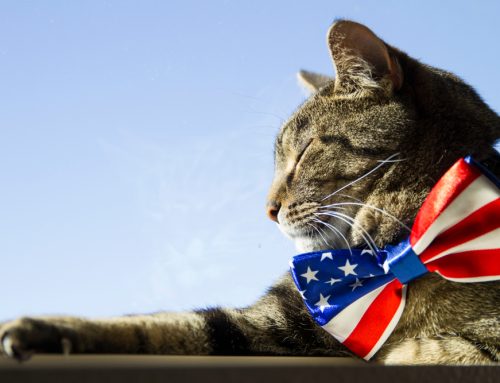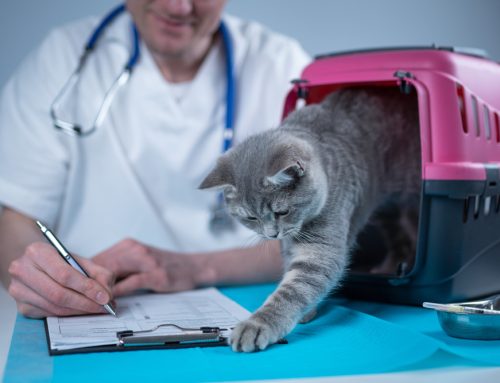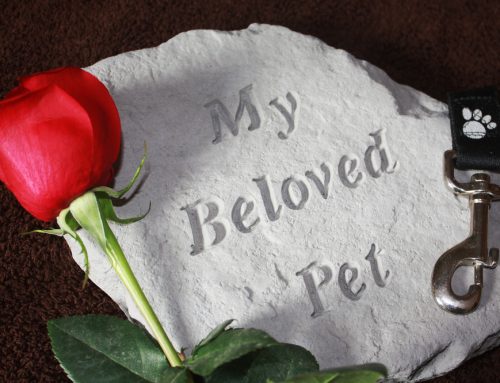If your pet suffers from thunderstorm-related anxiety (i.e., storm phobia), you likely dread each time you hear an approaching storm’s distant rumble. Seeing your beloved pet suffer intense emotional and physical distress every time the barometric pressure drops likely triggers your own anxiety—along with helplessness and heartache. As you do when any storm is forecast, make a few preparations to help minimize your pet’s reaction to tumultuous weather. Learn how to help your pet cope with their thunderstorm-related anxiety by reading our Veterinary Behavior Solutions team’s guide to preparing your pet to weather the storm.
Recognizing storm anxiety in pets
Many pet owners don’t mention storm anxiety to their primary veterinarian because they assume that nothing can be done to alleviate their pet’s fear. But storm anxiety is considered a recognized component of noise aversion (i.e., phobia)—a serious and often dangerous behavioral condition that is defined by exaggerated fear responses to perceived or real threats (i.e., loud or sudden noises). Pets’ common storm anxiety signs include:
- Panting
- Restlessness
- Drooling
- Yawning or lip licking
- Clingy behavior
- Hiding
- Digging
- Low body posture (e.g., crouching, flat ears, tucked tail, averted gaze)
- Attempted escape
- Destructive behavior
- House soiling
These signs may appear hours before a storm arrives and continue for hours or days after the storm has passed. Because severe storm anxiety can lead to life-threatening behavior (e.g., jumping through open windows, running into traffic), early veterinary diagnosis and management are the best ways to protect your pet.
On the radar—facing your pet’s storm anxiety
A pet’s storm anxiety can resemble inappropriate behavior, leading a pet owner to seek corrective treatment or modification with a pet trainer, which is ineffective for easing their furry pal’s stress. Without appropriate veterinary treatment—including medication when necessary—training-based solutions are temporary at best. Harsh corrections or punishment can actually heighten a pet’s anxiety.
The first step in preparing your pet for storm season is to recognize their condition. If your pet behaves unusually or shows obvious distress signs before or during a storm or other noisy events, schedule a consultation with our Veterinary Behavior Solutions team.
Quieting the storm—anxiety medication for pets
Medication can provide pets who have severe storm anxiety with much-needed relief. Gone are the days when ineffective tranquilizers (e.g., acepromazine) were the standard prescription for a pet’s storm anxiety. Today’s therapies target anxiety, calming rather than sedating a pet. If your veterinarian recommends pharmaceutical therapy, follow the label directions and administer your pet’s medication ahead of an impending storm. Anti-anxiety medications may include:
- Sileo (i.e., dexmedetomidine oromucosal gel) for dogs
- Trazodone
- Clomipramine
Shelter in place—creating a comfortable bunker for your pet
Pets who have storm phobia are hypersensitive about their surroundings. Providing your pet with a safe room or storm bunker is a simple, positive, and effective way to minimize upsetting visual and auditory stimuli, helping them feel secure.
Any small and quiet space (e.g., bathroom, spare bedroom) can be used as your pet’s storm bunker, but windowless or interior-facing rooms are ideal. Ensure to pet-proof the space and remove or secure any potential hazards. Outfit the area with your pet’s favorite items (e.g., cozy bedding, preferred toys) and necessary supplies (e.g., litter box, water, food).
Help your pet establish positive associations with the space by spending enjoyable time there during fair weather. To create a strong reinforcement history, play fun games or give your pet a long-lasting treat while in the space. Always take your pet to their bunker before an anticipated storm arrives, close the curtains, and use white noise or calming music to muffle outside sounds.
Soothe the system—comfort your pet
When your pet demonstrates apprehensive or nervous behavior, provide gentle reassurance and a positive distraction (e.g., a favorite chew, puzzle toy, food-stuffed frozen Kong). For continuous tactile comfort, many pets appreciate stress-relieving pressure garments (e.g., Thundershirt, Anxiety Wrap). Keep these items on hand and ready so that you’re prepared if a storm strikes unexpectedly.
Historically, pet trainers and veterinary professionals have advised pet owners to ignore their pet’s nervous, anxious, or fearful behavior because they believed that acknowledging or comforting your furry pal would encourage or exacerbate their reactions. However, veterinary professionals now know that pets’ fear cannot simply be ignored.
Speak their language—pheromones reassure nervous pets
Pheromones are naturally occurring chemical messages that dogs and cats use to communicate. Along with territory and mating purposes, pheromones convey a range of emotions—fear, stress, reassurance, and calmness.
Feliway for cats and Adaptil for dogs are pheromone products that mimic feline and canine calming messages. These odorless messages can be dispersed through room diffusers or misted on the pet’s bedding or a bandana, as a quick and effective way to comfort and reassure your pet in a language they understand.
Turn down the volume—desensitization and counterconditioning for pets

Long-term storm anxiety resolution requires desensitization and counterconditioning—strategic behavior modification techniques. Through gradual controlled exposures, careful pairing, and the complementary therapies, such as anti-anxiety medications and pheromones, a pet can learn new and positive associations with previously terrifying storm triggers. With time and careful training, a pet’s emotional and physical storm reaction can be significantly reduced. To discuss your pet’s desensitization and counterconditioning, consult with our Veterinary Behavior Solutions team to learn about our detailed treatment and training plan.
A break in the clouds—living with a storm-phobic pet
Thunderstorm anxiety causes pets dangerous fear and stress, significantly straining the pet-owner bond. But with empathy, thoughtful management, and strategic veterinary intervention, you can turn your pet’s raging turmoil to a quiet, calming whisper. Before dark clouds appear, learn more about preparing your pet for the upcoming storm season’s wrath by contacting our Veterinary Behavior Solutions team.







Leave A Comment